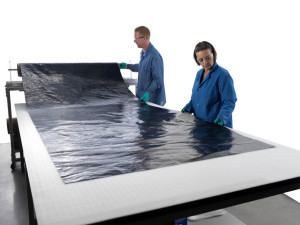
In July, Industrial Fabrics Association International president Mary Hennessy announced an initiative to create a searchable database for the Department of Defense (DOD) to identify industrial fabrics companies and products under the Military Uniform System Technology (MUST) program funded by the Defense Logistics Agency.
Maureen MacGillivray, a professor of apparel merchandising and design at Central Michigan University, and Robert Bona, vice president of operations at AdvanTech Inc. of Annapolis, Md., are working on the programming and administration of this project for IFAI’s Military Division. In August, IFAI presented a webinar on the topic; at the IFAI Expo in October, MacGillivray, her CMU colleague Tanya Domina, and Bona gave a demonstration on the MUST portal.
“The project focuses on improving collaboration between military and commercial manufacturers through the development of an Internet-based knowledge base that contains fabric specifications and properties available for purchase by the DLA or military services,” MacGillivray says. “Fabric manufacturers are submitting their spec sheets. Textile testers are submitting testing results and end product manufacturers are submitting product information.”
Aimed in part at streamlining the supply chain effort associated with developing and implementing new requirements for items, the initiative will be evaluated over the next several months.
 TEXTILES.ORG
TEXTILES.ORG


